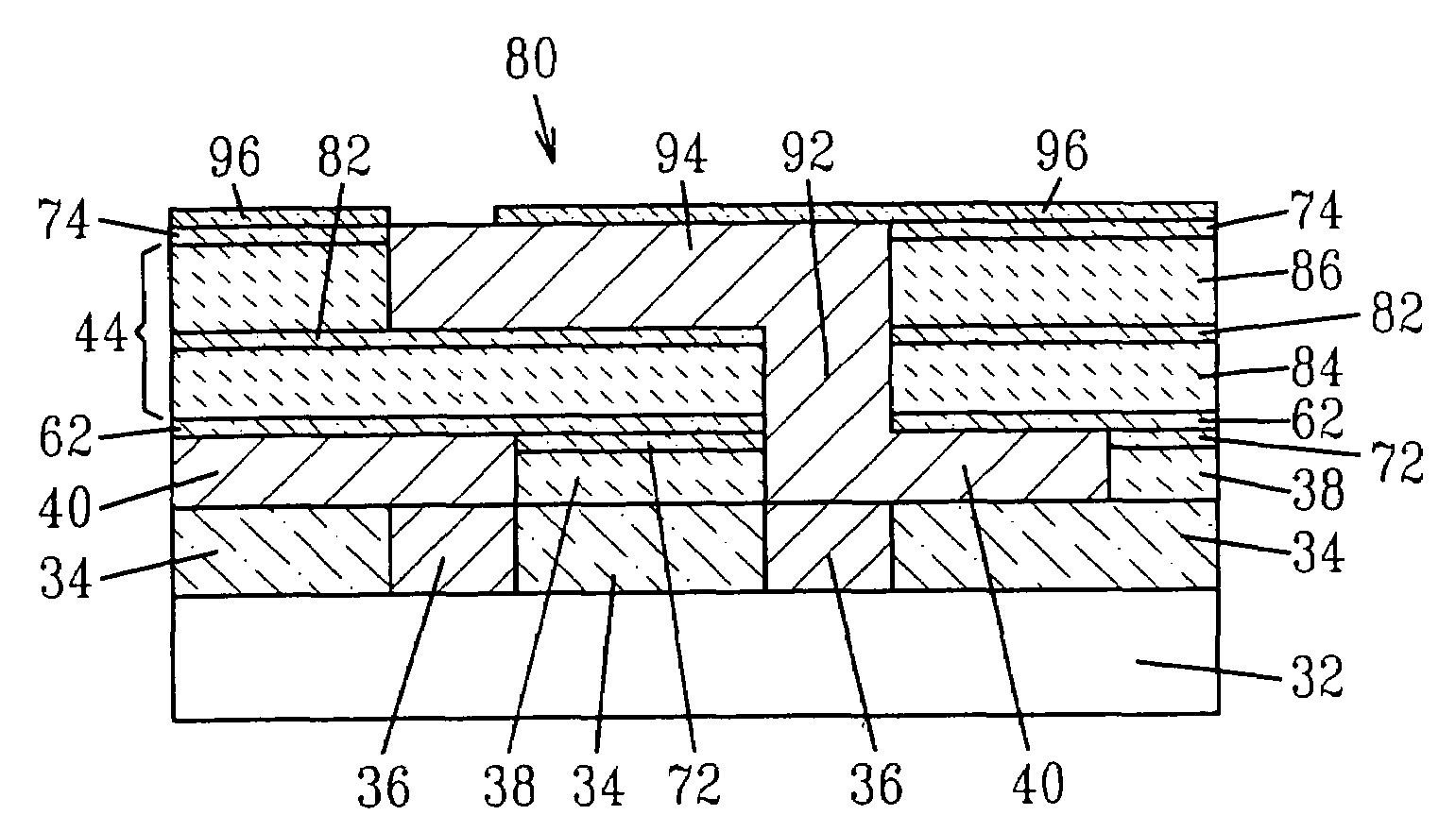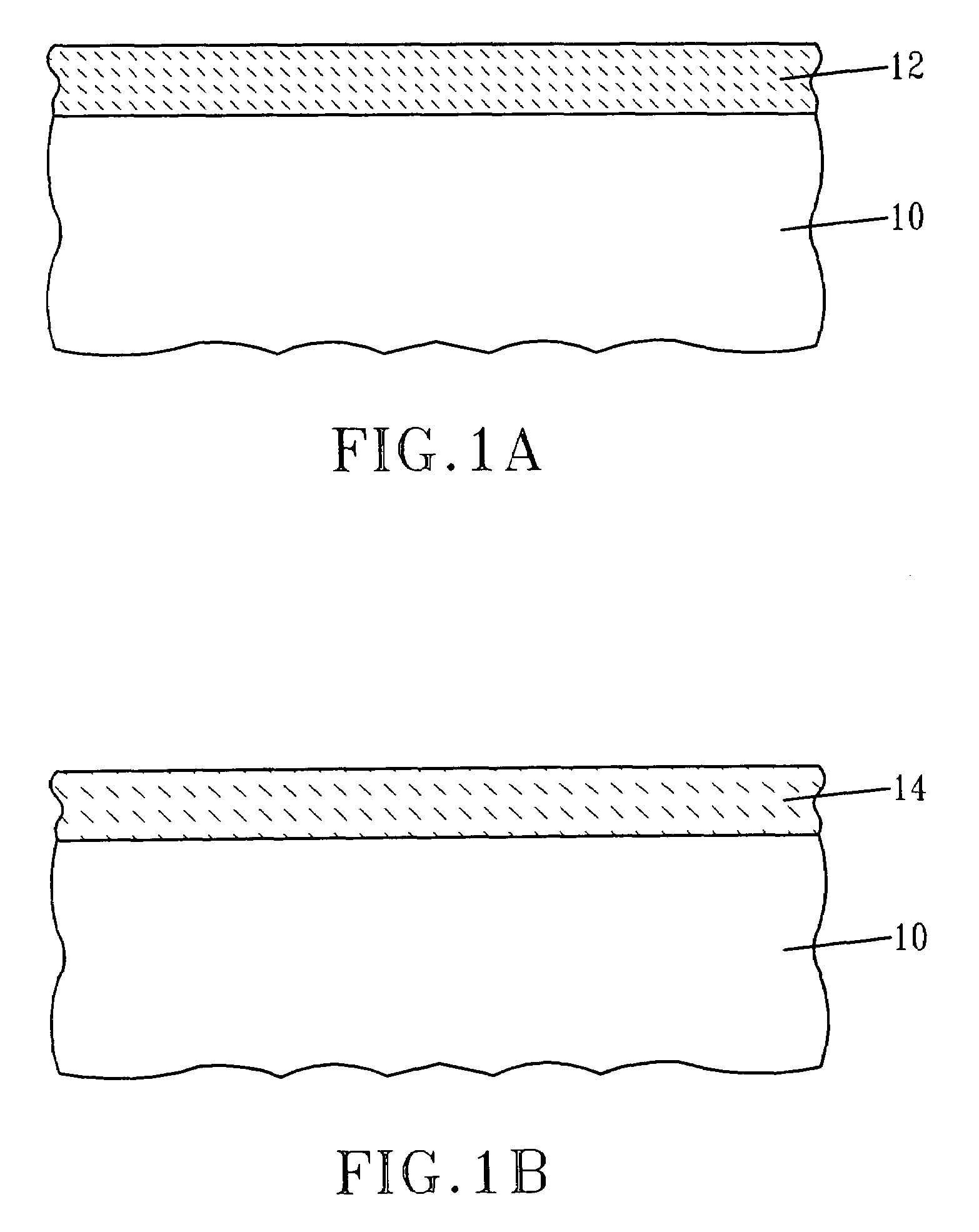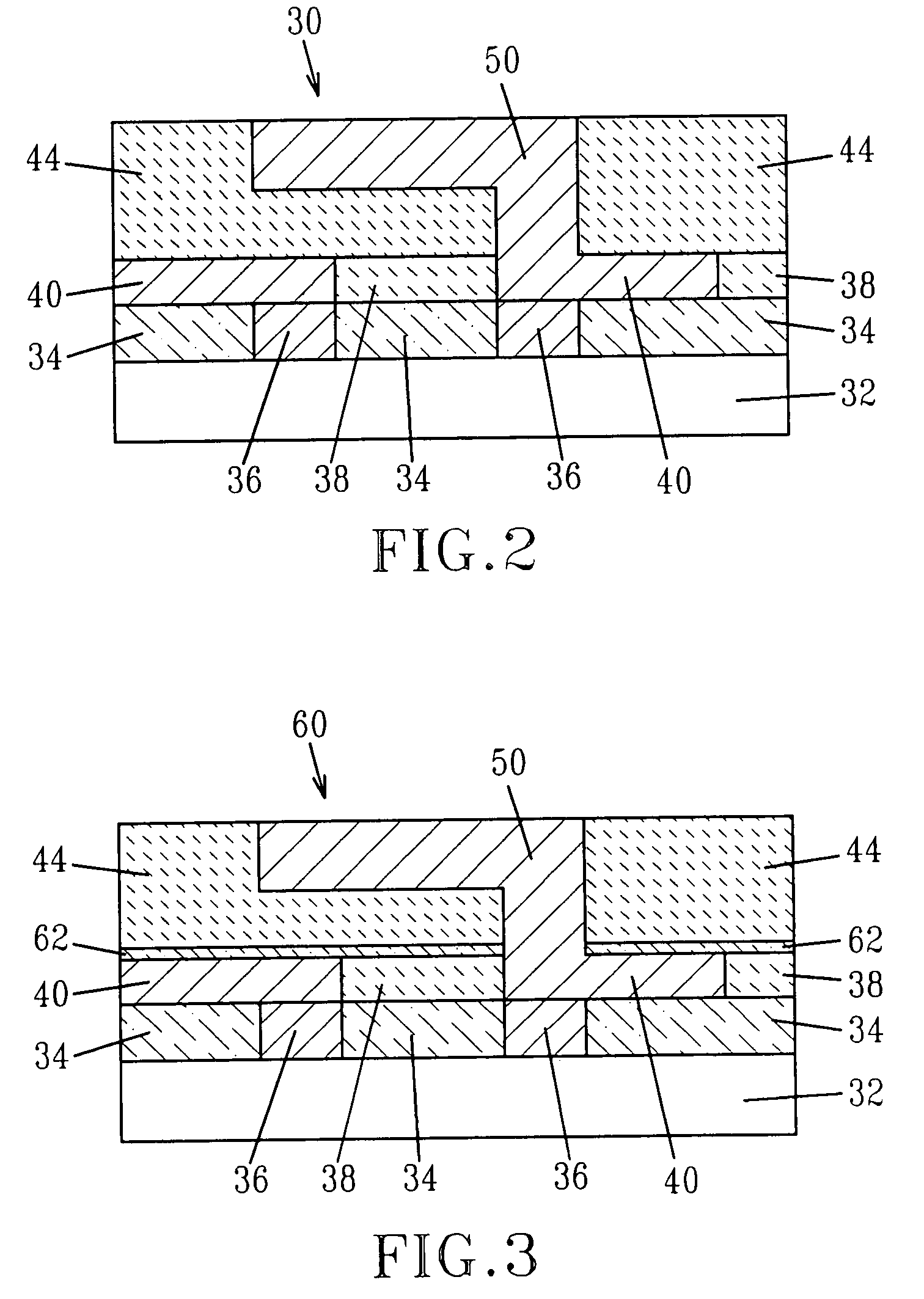DUV laser annealing and stabilization of SiCOH films
a dielectric film and laser annealing technology, applied in the direction of thin material handling, electrical equipment, transportation and packaging, etc., can solve the problems of unwanted changes in the film and the inability to stabilize the film, so as to improve the insulating properties, reduce current leakage, and reduce current leakage
- Summary
- Abstract
- Description
- Claims
- Application Information
AI Technical Summary
Benefits of technology
Problems solved by technology
Method used
Image
Examples
example
[0064]In this example, various dielectric films were deposited on a substrate and the reflectance spectra of each of the dielectric films were obtained by using an n&k analyzer by n&k Technology (Santa Clara, Calif.). The resultant reflectance spectra (reflectance vs. wavelength in nm) are shown in FIG. 6. The samples including a SiLK® film (Curve A, segmented line), an as deposited SiCOH dielectric (Curve C, solid line) and a DUV treated SiCOH dielectric film (Curve D, solid and bolded line) are compared with an SiO2 simulated spectra (Curve B, dotted line).
[0065]The sample including the SiLK® film was prepared by spin-on coating a 500 nm layer of SiLK® onto a Si substrate. The SiO2 sample was simulated using the internal film library supplied with the n&k tool manufacturer. The untreated SiCOH containing sample of FIG. 6 was prepared by PECVD of TMCTS. The resultant non-DUV laser treated SiCOH film had an as deposited thickness of about 400 nm. The same film was subjected to laser...
PUM
| Property | Measurement | Unit |
|---|---|---|
| dielectric constant | aaaaa | aaaaa |
| dielectric constant | aaaaa | aaaaa |
| temperatures | aaaaa | aaaaa |
Abstract
Description
Claims
Application Information
 Login to View More
Login to View More - R&D
- Intellectual Property
- Life Sciences
- Materials
- Tech Scout
- Unparalleled Data Quality
- Higher Quality Content
- 60% Fewer Hallucinations
Browse by: Latest US Patents, China's latest patents, Technical Efficacy Thesaurus, Application Domain, Technology Topic, Popular Technical Reports.
© 2025 PatSnap. All rights reserved.Legal|Privacy policy|Modern Slavery Act Transparency Statement|Sitemap|About US| Contact US: help@patsnap.com



